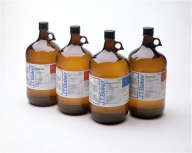read: 527 time:2022-10-11 14:09:49 from:
Acetone(CH3COCH3), also known as dimethyl ketone, is the simplest saturated ketone. It is a colorless transparent liquid with a special pungent smell. It is easily soluble in water, methanol, ethanol, ether, chloroform, pyridine and other organic solvents.

What are the effects of acetone?
Inflammable, volatile and active in chemical properties. At present, the industrial production of acetone in the world is dominated by cumene process. Acetone is mainly used as a solvent in industries such as frying, plastics, rubber, fiber, leather making, oil and paint, and also as an important raw material for the synthesis of ketene, acetic anhydride, iodoform, polyisoprene rubber, methyl methacrylate, chloroform, epoxy resin, etc.
Preparation method of acetone
It is also often used as the raw material of drugs by illegal elements. Acetone is a representative compound of ketones, with typical reaction of ketones.
For example, the adduct forming colorless crystal with sodium bisulfite. It reacts with hydrogen cyanide to form acetone cyanohydrin. Isoacetone and pinacol are formed under the action of reducing agent. Acetone is relatively stable to oxidant.
It will not be oxidized by nitric acid at room temperature. When acid potassium permanganate strong oxidant is used as oxidant, acetic acid, carbon dioxide and water are generated. The bimolecular condensation occurs in the presence of alkali to produce diacetone alcohol. 2mol acetone generates isopropylidene acetone in the presence of various acid catalysts (hydrochloric acid, zinc chloride or sulfuric acid), and then adds with 1mol acetone to generate phorone (diisopropylene acetone).
Under the action of concentrated sulfuric acid, 3mol acetone removes 3mol of water to produce 1,3,5-trimethylbenzene. In lime. Isophorone (3,5,5-trimethyl-2-cyclohexen-1-one) is synthesized by condensation in the presence of sodium alkoxide or sodium amino.
In the presence of acids or bases, condensation reaction occurs with aldehydes or ketones to produce ketone alcohols, unsaturated ketones and resinous substances. Bisphenol A was synthesized by condensation with phenol under acidic condition. Acetone α- Hydrogen atom is easily replaced by halogen α- Haloacetone.
It reacts with sodium hypohalide or alkali solution of halogen to form haloform. Acetone reacts with Grignard reagent, and the addition product is hydrolyzed to obtain tertiary alcohol. Acetone can also react with ammonia and its derivatives, such as hydroxylamine, hydrazine, phenyl hydrazine, etc.
In addition, acetone is cracked at 500~1000 ℃ to produce ketene. Isobutylene and acetaldehyde are produced by silicon aluminum catalyst at 170~260 ℃; Isobutylene and acetic acid are generated at 300~350 ℃. It can not be oxidized by silver ammonia solution, newly made copper hydroxide and other weak oxidants, but can catalyze hydrogenation to generate alcohol.

Jincheng Petrochemical's 300000 ton polypropylene plant successfully trial production, 2024 polypropylene market analysis

The ABS market remains sluggish, what is the future direction?

Market differentiation of bisphenol A intensifies: prices rise in East China, while prices generally decline in other regions

The production method and process flow of silicone acrylic lotion, and what are the common raw materials